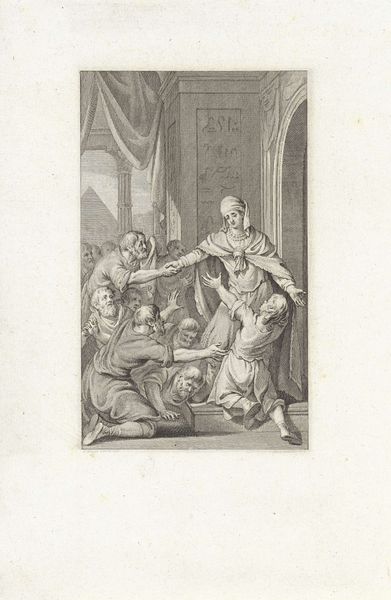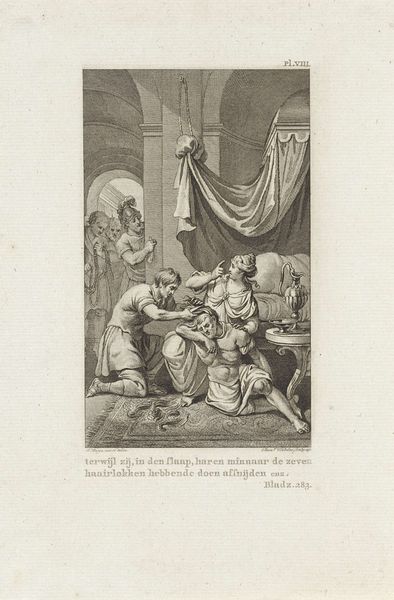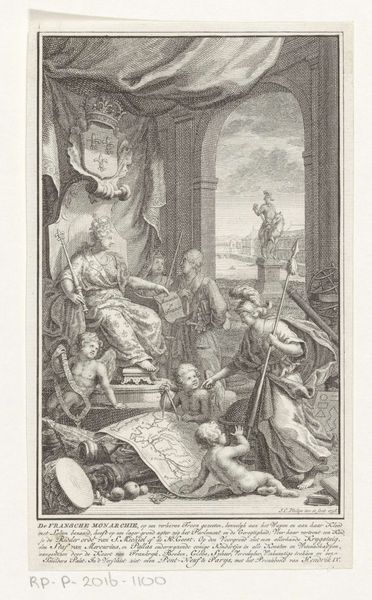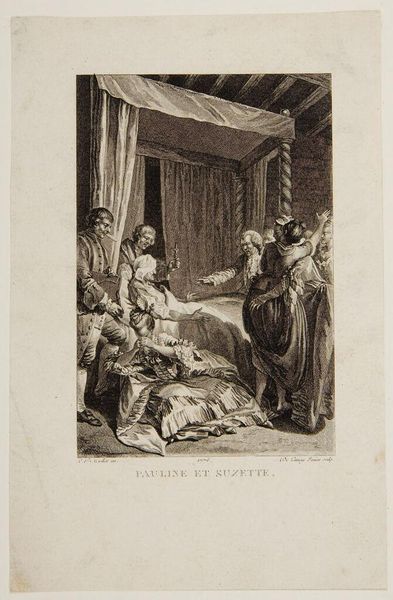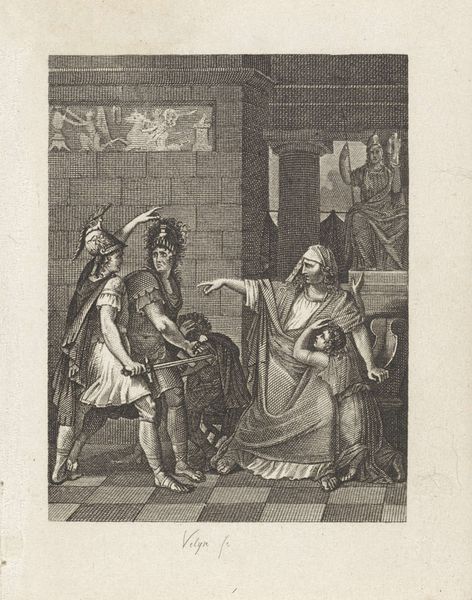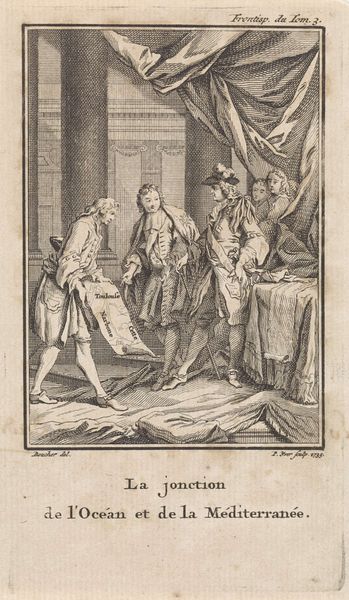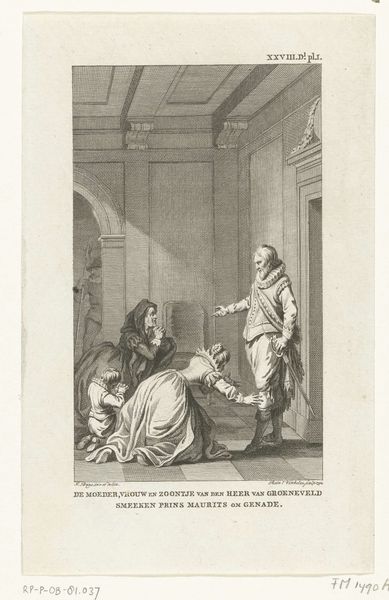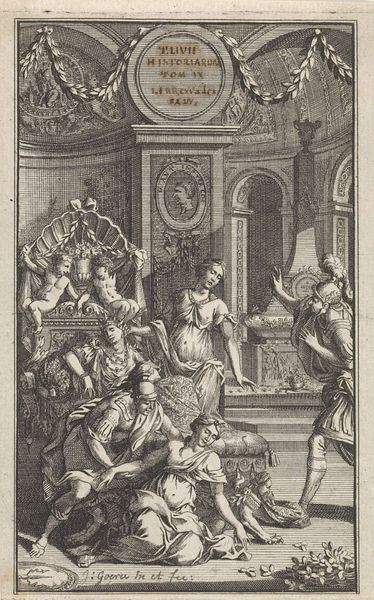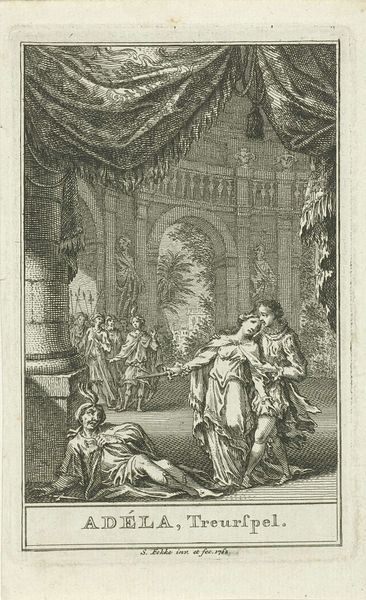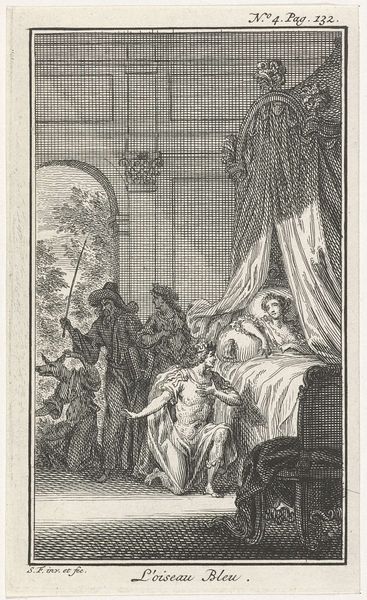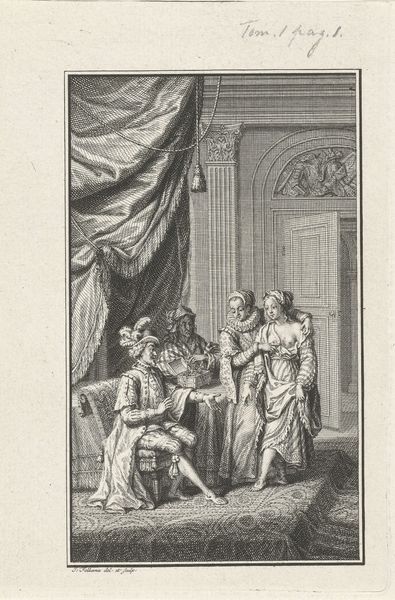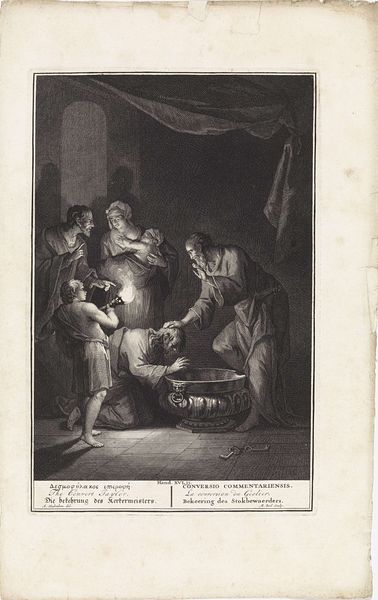
print, engraving
#
portrait
#
baroque
# print
#
old engraving style
#
figuration
#
personal sketchbook
#
line
#
genre-painting
#
history-painting
#
engraving
#
realism
Dimensions: height 133 mm, width 72 mm
Copyright: Rijks Museum: Open Domain
Editor: Here we have "Schilder verklaart een vrouw de liefde," or "A Painter Declares His Love to a Woman," a print made in 1740 by Jan Punt. I'm struck by how meticulously detailed it is, considering it’s an engraving. What catches your eye? Curator: It's interesting to consider this image as a commodity. Who was its target audience? How was it distributed, and how would the context of its consumption have influenced its meaning? These prints served as accessible forms of art for a growing middle class. Editor: That makes sense! How does that impact its interpretation? Curator: The fact that it's an engraving, a process that allowed for relatively inexpensive reproductions, is crucial. It suggests a deliberate attempt to democratize access to art and, consequently, ideas about love, status, and artistic skill. It turns attention away from the individual genius of a painting and instead emphasizes the reproductive labour required in its manufacturing, and consumption as an aesthetic or cultural object. What elements stand out when considering that the line work is not an aesthetic decision, but also born of manufacturability and output? Editor: Well, thinking about it that way, the starkness emphasizes the societal roles portrayed – the artist, the lady, the onlookers. Maybe it was meant to offer social commentary accessible to many? Curator: Exactly! Consider the labour involved in creating these prints versus painting at the time. It changes how we see art's value, right? Editor: Absolutely, it challenges this romanticized image of the artist. Thanks, I hadn’t considered the materials themselves playing such a huge part in the artwork’s meaning! Curator: My pleasure. The very act of producing this engraving and the societal conditions under which Jan Punt made and distributed his works tells us volumes about a changing landscape of class and economics.
Comments
No comments
Be the first to comment and join the conversation on the ultimate creative platform.
